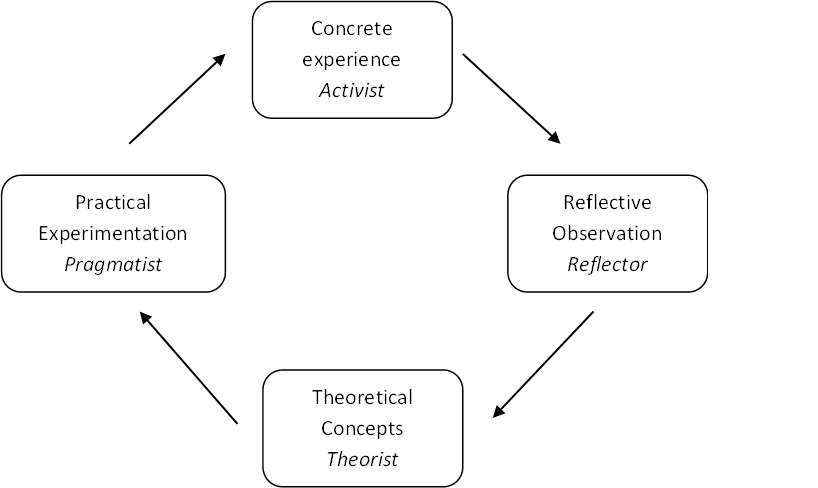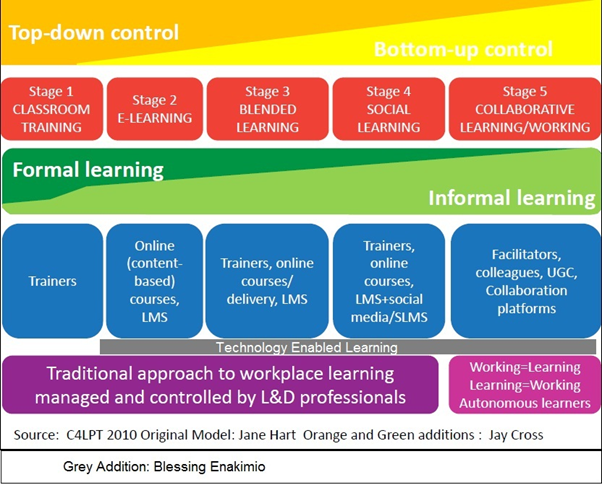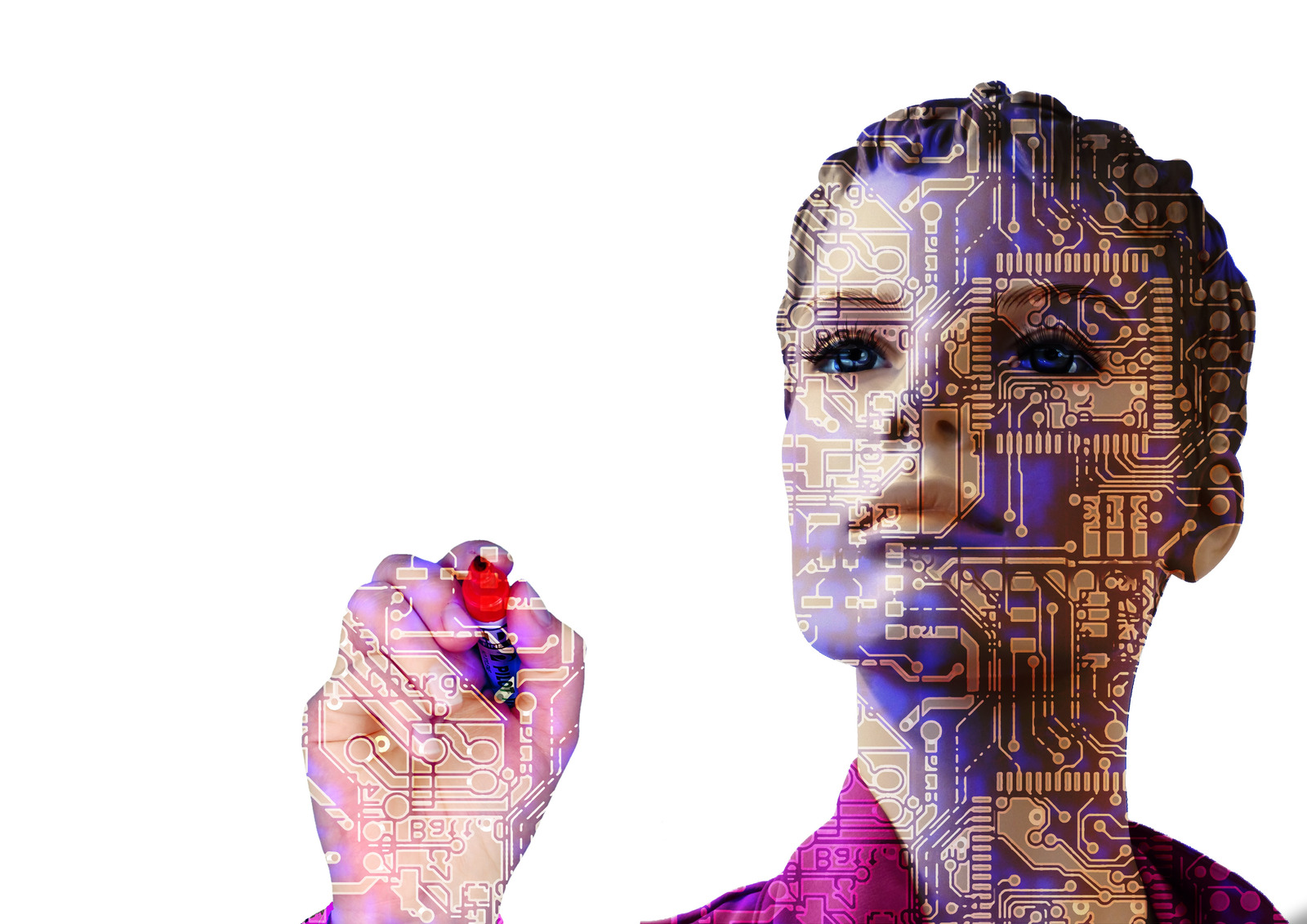Technology has a vital role to play in the continuum of managed learning processes. These…

How We Learn
Many of the change scenarios we find ourselves in require us to learn something new or adjust the way we operate, or unlearn something. Learning takes place at different stages and in different ways, depending on our preferred way of learning. Some prefer to just dive in at the deep end and sink or swim, then learn either by failing or by getting it right. Some prefer to watch others learn, while others may prefer to read about it first prior to exploring.
Learning can also be conscious and unconscious. Gestalt psychologists suggest that some things being in the foreground and others in the background, give us our worldview. Sometimes when learning is perfected and competence in a skill is achieved consciously, it is moved to our subconscious by experience – for instance driving a car.
Kolb’s (1984) learning cycle is a widely used model on experiential learning. It shows how and when learning occurs through a process of doing and thinking. Kolb’s cycle is a build up from Honey and Mumford (1982) on their learning styles labels: Activist, Reflector, Theorist and Pragmatist.
Kolb's Learning Cycle

Kolb (1984) suggests this as a cycle through which the individual has a concrete experience: The individual does something, reflects on the experience, makes sense of it by drawing conclusions and plans to do things differently in the future. This theory suggests that we all have a learning preference and can get stuck within our preferences. If this is the case, it is worth knowing what our learners’ preferences might be and seeking to explore how to engage them accordingly. This has a direct effect on technology enabled learning as for instance, a Pragmatic learner might prefer a practical class over an elearning module. Bearing this in mind, enabling technology to enhance learning will need to include practical experimentation such as simulations.
For the purpose of this article, my focus will be on the five stages of workplace learning as defined by Hart (2010):
Stage 1: Classroom Training:
The first stage of workplace learning is the Classroom training. This is a scheduled, synchronous event, led by an instructor, sometimes called Leader-Lead training. Some of the advantages to this include the; Students being taught by industry experts or credible tutors, interaction between students in a controlled environment, face-to-face exchange of information, ideas and concepts between the trainer and students and also allows for individual questions to be asked and answered reliably but having stated this, there are more dis-advantages that are arising in the modern day economy.
Some of these dis-advantages include: Classroom training is becoming more and more expensive; more time consuming, due to a number of factors such as disruptions to typical work day, travel, etc. not all the time spent in an instructor- led compliance training session is devoted to instruction, thereby stifling training effectiveness.
Furthermore, delays in induction days or training of new employees can also be a problem in productivity in that organisation. Still another problem is finding the appropriate level of instruction for every member of the class. Each employee within an organisation has a slightly different role and besides not all students learn at the same pace therefore the one-size-fits-all approach of a Classroom will not be most productive.
Stage 2: E-learning:
E-learning is essentially the computer and network-enabled transfer of skills and knowledge. This can be asynchronous. In late 1997, learning guru Elliott Masie said that online learning is the use of network technology to design, deliver, select, administer, and extend learning. In 1998, Cross used the term ‘elearning’ and defined it as learning on Internet Time, the convergence of learning and networks. He goes on to say that eLearning is to traditional training as ‘eBusiness’ is to business as usual.
Stage 3: Blended Learning:
Blended learning is the thoughtful integration of classroom face-to-face learning experiences with online learning experiences (Garrison & Kanuka, 2004). Their paper entitled ‘Blended learning: Uncovering its transformative potential in higher education’, describes Blended Learning as the concept of integrating the strengths of synchronous and asynchronous learning activities.
Stage 4: Social Learning:
This comes from the view that knowledge to socially constructed. Jarvis et al (2003). In this stage, individuals reflect on what is received, adapt them and subsequently communicate them to others in a social interface. This is where chats and blogs come in to play.
Stage 5: Collaborative Learning:
Gokhale (1995) has widely researched and advocated throughout the professional literature, the concept of collaborative learning and the grouping and pairing of students for the purpose of achieving an academic goal.
The term ‘collaborative learning’ refers to an instruction method in which students at various performance levels work together in small groups toward a common goal. The students are responsible for one another’s learning as well as their own. Thus, the success of one student helps other students to be successful.
C4LPT 2010 Original Model: Jane Hart, Orange and Green additions: Jay Cross, Grey addition: Blessing Enakimio

This table shows the move from To-down control (Instructor-led) to bottom-up control (learner led) as you go from Stage 1 through to Stage 5. It also shows the shift from formal learning to informal learning. Organisations should strive to get to a place where learning is fully integrated into working, according to Hart (2010); working=learning and learning=working; a place where learners are autonomous. Andragogy; a student-centred approach to adult education, as promoted by Knowles (1980), supports this argument.
The current society is used to information on demand, for instance TV on demand, readily available mobile apps, and more. According to Garrison and Kanuka (2004), society and technology alter the way we communicate and since society approaches technology differently, the way the society chooses to use technology and respond to it affects the way we learn. The transformative potential of technology enabled learning lies in the internet information and communication tools that provide flexibility of time and the end of just ‘classroom-based’ learning. This will allow for flexibility in utilising both face to face and online learning for the purposes of education. It can be assumed that in order to match the approach of the society, this new learning platform will need to take the form of ‘learning on demand’, where learning can be self-led and achieved on demand. This could be achieved by embracing technology enabled learning.
Author: Blessing Enakimio
